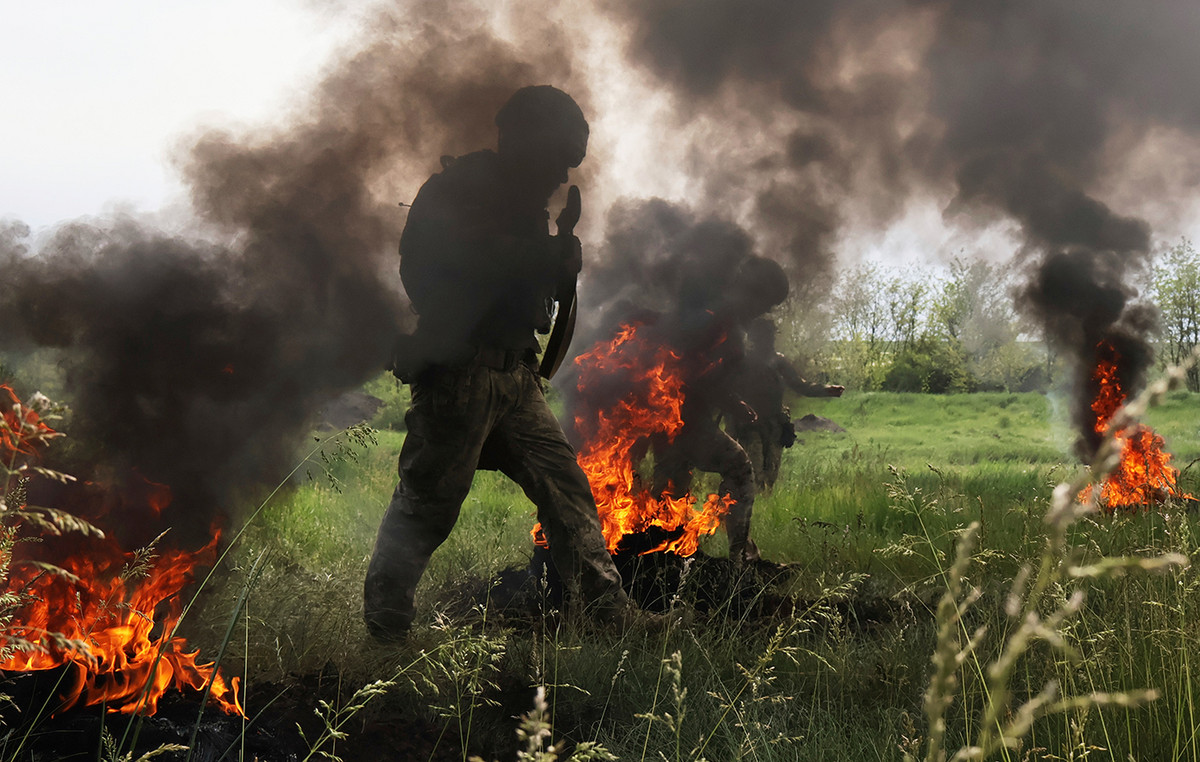A number of “unidentified objects” have entered the skies over North America in recent days, only to be shot down by US military aircraft.
And in the grand tradition of public speculation surrounding mysterious airborne entities, many people have questioned whether extraterrestrial activity is happening.
The short answer? No, there is not.
“I know there have been questions and concerns about this, but there is no – again no – indication of aliens (or) extraterrestrial activity,” said Karine Jean-Pierre, White House press secretary.
US officials referred to the object shot down off the east coast on February 4 as a surveillance balloon, while the other three stopped in its tracks on February 10, 11 and 12, respectively, were referred to as unidentified objects that were moving slowly. through the skies at around the same altitude as planes fly.
But that doesn’t mean authorities are suggesting the objects are of an unexplained nature or even related to a previously observed “unidentified aerial phenomenon” – which is also unlikely to be extraterrestrial in origin.
At least two senior US officials have used the term “balloon” to describe the latest intruders, although the Pentagon’s official position is to stay away from that descriptor.
Authorities are currently working to retrieve pieces of the three objects to identify their purpose.
US airspace is no stranger to bulky, slow-moving objects.
High-altitude balloons are used for a vast array of authorized purposes in the public and private sectors, such as monitoring the weather, capturing sharp images of the cosmos, conducting scientific experiments and testing new radar technologies.
US meteorologists launch these balloons dozens of times a day.
In addition, weather balloons are deployed twice a day, every day, at the same time in nearly 900 locations worldwide.
Even individual citizens can launch their own high-altitude balloon for research, education or entertainment purposes.
For example, Emily Calandrelli, an engineer and media personality, released an ultrasound of her unborn child in a high-altitude balloon in 2019 and documented the experience online.
There are also some companies exploring ways to use technologically advanced balloons to send paying customers on high-altitude adventures aboard a luxury capsule.
“Unidentified Objects”
The events of the past two weeks have triggered a broader conversation about a suspected campaign by China to use high-altitude balloons for reconnaissance.
It is possible that government officials in China were hoping to use aircraft rather than relying on space spy satellites. [dos quais existem muitos dos EUA, China e outros países]because a balloon travels closer to the ground, offering higher quality images and data, said John Kirby, strategic communications coordinator for the National Security Council, during the White House briefing on Monday.

He added that China’s alleged campaign is not new and it is likely that we are hearing more about these objects now only because the military is getting better at identifying and tracking them.
China has claimed that the alleged spy balloon was actually a weather balloon that went off course, a report that US officials say is untrue. No country claimed responsibility for the other three objects.
Melissa Dalton, assistant secretary of defense for internal defense and hemispheric affairs, told reporters on Sunday that the objects were brought down by military jets out of “an abundance of caution” as they pose no physical threat to people on the ground.
Dalton also acknowledged that high-altitude objects could be used by a variety of companies, countries and research organizations for “purposes that are not nefarious, including legitimate research”.
How do high-altitude balloons work?
There are many different configurations and types of high altitude balloons, but they all work using the same principles. Before launch, the balloon is partially filled with a gas, such as hydrogen or helium.
Upon release, as the balloon rises and the air becomes thinner, the gas expands and fully inflates the balloon.
The scientific instrument – called a radiosonde – that goes up attached to a weather balloon parachutes back to the ground as soon as the mission is completed, according to the National Weather Service.
NASA also claims on its website that it uses a pursuit plane to track science balloons as they descend to ensure they land in safe places. When balloons are used for authorized purposes, the Federal Aviation Administration approves their release in advance.
The agency can then issue an Air Mission Notice, or NOTAM, which alerts aircraft pilots that airspace is restricted around the area where the balloon will be deployed. A similar process takes place every time rockets are launched into space.
Weather balloons and research balloons typically fly at altitudes of over 100,000 feet (30,480 meters), well above where commercial aircraft normally fly, according to Nasa and the National Weather Service.
That’s one reason the objects shot down over the weekend were so concerning: They were flying between 20,000 and 40,000 feet (6,096 and 12,192 meters), according to Kirby, and could pose a risk to planes in the air.
High Altitude Balloons: The Story
Researchers have used balloons to explore the upper atmosphere for scientific purposes since the late 19th century, and some of the earliest flights were aimed at studying topics like weather patterns and cosmic rays.
A from there, research expanded to “air sampling to detect atomic explosions, photographic flights over foreign terrain, astronomical observations above troposphere disturbances, and even aerodynamic testing of free-falling charges,” according to the Encyclopaedia Britannica.
Research never stopped, even as suborbital sounding rockets offered new ways to take experiments into the upper atmosphere.
That’s because balloons still offer unique advantages: They don’t disturb the environment around them, they’re very gentle on scientific instruments, they can hover in one place for long periods of time, and they cost less than rockets.
Source: CNN Brasil
Bruce Belcher is a seasoned author with over 5 years of experience in world news. He writes for online news websites and provides in-depth analysis on the world stock market. Bruce is known for his insightful perspectives and commitment to keeping the public informed.







